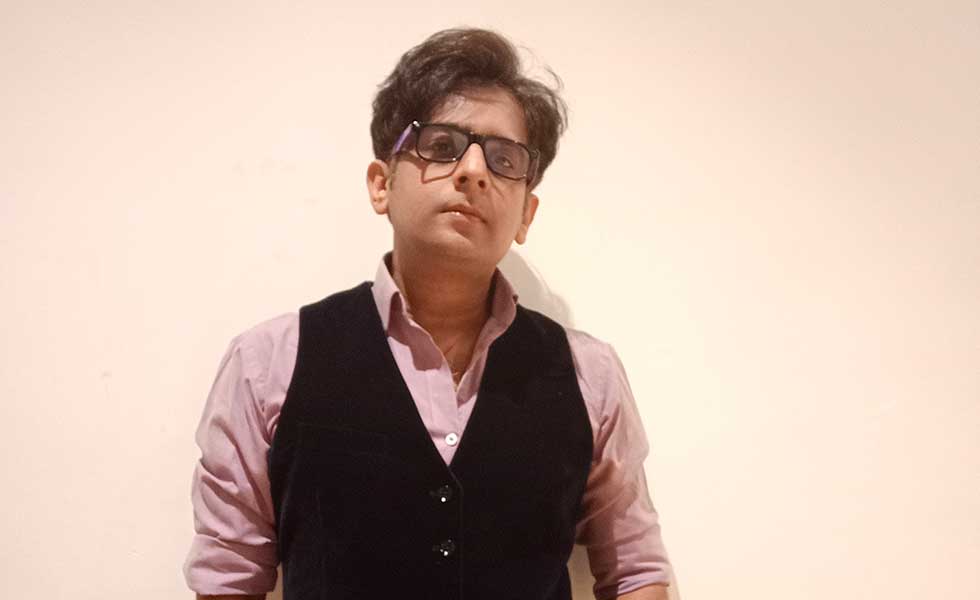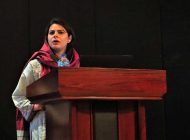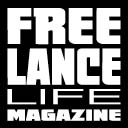One of the main goals of Freelance Life Magazine is to promote successful freelancers who can inspire others to start their freelance journey. This time we have the pleasure to present Rishi Mathur, a designer from India.
Who is Rishi Mathur? Tell us something about yourself, where you grew up, what school you graduated from, where you live…
I (Rishi Mathur) am a multi-disciplinary designer, creator, mentor, and learner, who loves to build things through his creative expertise, with a total experience of over 12 years, including 5+ years in full-time freelancing, with leading global companies across different industries. I am based out in India. I currently live in Noida, India.
I grew up in the North Indian city of Lucknow in a humble middle-class family. My parents have been in the education sector. My father is a (retired) Government employee, while my mother is a Lecturer in an educational institution. Being from a middle-class family background, our lives have mostly been filled with financial struggles. But my parents always made sure of zero compromises in my and my sister’s quality education.
Since a young age, I was quite inclined toward creativity and arts. I used to sketch drawings and paint and have been privileged to win various awards both on local, State, and National levels. I was honored to receive personal appreciation from H.E. (Former) The Prime Minister of India, and H.E. (Former) The President of India during my school days for my creativity and love towards arts.
I was not particularly clear about which career to choose during my school days. Most of my friends went for Engineering, and I wanted something else for me, that I am good at doing, associated with art and creativity.
Related Posts:
In 2006, after Higher Secondary Education (Class 12), I moved to Noida, a rapidly growing & developing industrial city near the National Capital, Delhi to pursue a 3-year Diploma in Footwear Design at the Footwear Design & Development Institute / FDDI (Ministry of Commerce & Industry, Government of India). This college education really kept the foundation of what I am today. I learned how creativity marries design and results in building commercially feasible products and much more.
After graduating from FDDI in 2009, I joined Lee Cooper, a UK-based fashion and lifestyle brand in the Footwear wing in India as a Lead Designer (Footwear & Accessories). After working there for some 4.5 years, I moved to join a few other companies, both in the footwear and non-footwear industries.
However, in early 2018, I decided to take a plunge into full-time design freelancing, and here I am today 😊.
As a multi-disciplinary freelance creative designer, my KRAs include:
- User interface design, user experience design (UI/UX), interaction design, and product design (digital and physical).
- Visual design, graphics, and infographics design.
- Interactive presentation design.
- Footwear and fashion accessories design.
- Animated film making, character design.
- Marketing communications and brand design.
- Political communication design.
- NFTs and crypto art design.
Some of my valued clients and employers include:
- Lee Cooper.
- ID Shoes.
- Pierre Cardin Paris.
- Parliamentarians with Innovators for India – a Covid19 action committee.
- MindRise
- Immunise India
- Pepsi
- WorxWide UK
- Aakash & Co., and more..
* There are many other leading companies and organizations with whom I work on a regular mode, but as I’ve signed NDAs with them, I am not supposed to disclose their information.
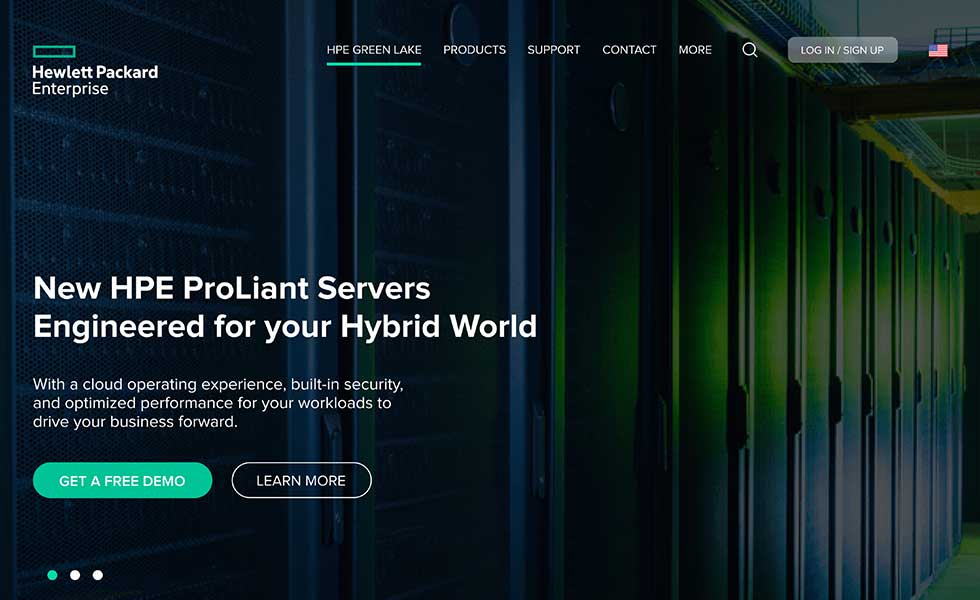
Operational/ Targeted Demographics: India, UK, US, Canada.
Operational/ Targeted Industries: Technology, Consulting, SaaS, Retail (offline, online, omnichannel), Education, Healthcare, Governance and Politics, Fashion & Lifestyle.
My work engagement preferences: I have a preference for engaging in collaborative work with reputable clients who offer fair and favorable terms for long-term and scalable projects or as an ongoing part of their team.
In most cases, I operate as an independent/ individual contributor, creator, or consultant, serving esteemed client companies across various projects and opportunities. However, when the project scope requires additional resources and is financially feasible, I have a network of like-minded professionals who can be enlisted to contribute to the work, thereby expanding our bandwidth.
My design portfolio and work samples are available at https://linktr.ee/therishimathur .
My Hobbies: Watching movies, travelling, exploring new design tools and technologies, making meaningful & new connections, driving, and sketching.
Did you always want to be a designer, or did life lead you down that path?
I won’t be honest if I say that I always wanted to be a designer. During my school time, I was kind of confused about what career I wanted to choose for myself. In those years, most of my friends followed the bandwagons of Engineering, and design-based careers were not as popular as they are now. Additionally, I was not so good in mathematics and playing with numbers and variables, but I always had a solid attraction towards visuals, design, arts, and creativity with the practical implementation of technology. You may say I have been good at ‘visual mathematics’. And yes, I was better at computers than my other classmates.
When I was in school, I used to sketch portraits and do a lot of paintings as hobbies. I even won lots of awards and appreciation up to the National level and from eminent personalities, including H.E. (Former) The Prime Minister of India, H.E. (Former) The President of India.
However, lately, I decided to cut all distractions and just follow my instincts in creativity and design, and in 2006, after Higher Secondary Education (Class 12), I moved to Noida, a rapidly growing & developing industrial city near the National Capital, Delhi to pursue a 3-year Diploma in Footwear Design at the Footwear Design & Development Institute / FDDI (Ministry of Commerce & Industry, Government of India).
I studied footwear design and accessory design there (as per the given curriculum) for 3 years, but my zeal to learn more helped me gain even more skills, including graphics, web design, and more through the personal practical initiatives that I followed during weekends and late hours. My teachers and colleagues also supported me a lot in my efforts.
That was my transition from an amateur ‘artist’ to a ‘designer’. And that was the time I realized that’s something I wanted to become in my life.
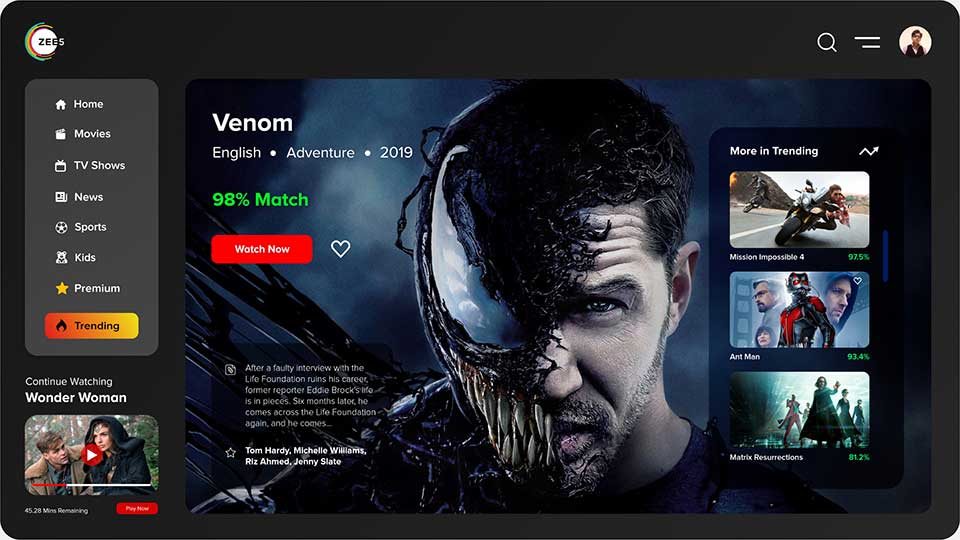
You deal with different types of design, from Product Design & Management, Fashion, and Marketing Design to UI/UX and Animations. What type of design is your favourite?
Every design is unique and I love all formats, including Product Design, UI/UX Design, Animations, Visual Design, PowerPoint Design, Marketing Communication Design, Footwear & Accessory Design, and more.
Each of them brings a diversified view and approach toward problem-solving and solution creation, with learnings that help cross-dimensionally. An experience with a complex UI/UX project can help exponentially in designing an interactive PowerPoint deck for a large client. Past exposure to scaling up customer experience in physical products can help build better UX in a digital product. You just need to think in that way. So, it’s always good to diversify your skills and expertise, and most importantly, scale up and qualify on them.
If you ask my personal favorite, I love designing animated characters. Since I was a child, I loved watching cartoons on TV, and I still do. I was so fascinated to see how artists and creators bring life to illustrations and make them talk, walk, sing, and act like living beings. And I got an opportunity to deep dive into 2D animations in the year 2018, which bagged me a once-in-a-lifetime opportunity to work for The Prime Minister of India to design their animated campaigns.
And which type of design do you consider the most demanding?
Currently, UI/UX is among the most demanding. I have been witnessing a solid turn to UI/UX design since last year. Rise in the numbers of tech startups, funding inflow, digital transformation of existing companies, Covid-time experiences, lower data costs, and most importantly scale-up customer experience (CX) and retaining existing customers are some of the many reasons behind the rise of UI/UX design.
The other is AI-based visual design. Though AI gives even a non-designer an edge to create great visual art, the demand for AI-based designers is certainly growing
Some of the unsung domains (which have a lot of potential and still growing) include data visualization, pitch deck design, and mentoring.
Many designers specialize in a specific type of design, UI/UX, layout, or logo design. How is it that you remain so versatile?
When I started my design career in 2009 at Lee Cooper, I intended to stay in footwear and accessory design and keep growing in this industry only. However, after some time I realized that the footwear and fashion industry is capital-intensive. Being a creator, my entrepreneurial spirit always compelled me to build things that deliver value and solve problems. This made me take a plunge into learning more skills and upscale myself.
After a few years, I took some entrepreneurial initiatives, which could not survive for long. From 2014 to 2017, I kept juggling between full-time jobs and some part-time gigs, which again, did not suit me well. It won’t be wrong to say, that for a few years after beginning my professional journey and getting a ‘good’ job, I was still confused about which direction my career was going, keeping me badly impatient
However, in 2018 I decided to get into full-time freelancing with a leading footwear company, Aakash And Company, Delhi after getting a reference from my Senior at Lee Cooper. There I started by creating graphics, marketing posters, and footwear designs & accessories for their brands and stakeholders.
While working with AAC, I got another opportunity to work with a leading consulting company, Worx Wide (formerly BidsAndBeyond), and help them in creating editable visuals, infographics, and interactive pitch decks, particularly in PowerPoint. That was the moment I realized PowerPoint was a lot more powerful than I even thought. So I learned this new skill as quickly as possible while working with Worxwide.
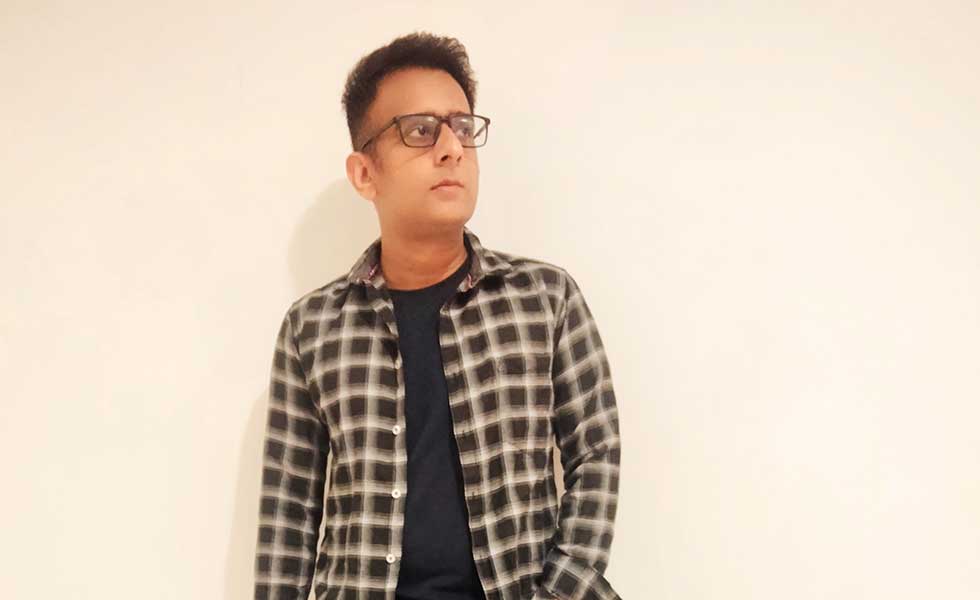
My quest to learn more and scale up my expertise didn’t stop there and I went on to learn Animations and 2D Film Making, Marketing Communication, User Interface Design, User Experience Design, Interaction Design, Packaging Design, Political Communications, and more while continuing to work with my existing and new engagements.
Parallel to learning, I also made sure that I promote and reach out for new collaborations to exploit my new & existing expertise and acquire new customers, which helped me to increase my revenues multiple times as compared to my past full-time jobs. This still continues to this date.
For me, design and creativity are religions, and they are an endless universe of learning, and acquiring multiple design skills and continuously improving and refining them becomes extremely important to stay relevant and keep growing in today’s hyper-competitive environment. I would like to highlight a few points for aspiring freelancers:
- Expand Your Skill Set: Continuously learn and acquire new design skills and stay up to date with emerging trends and technologies. This is a time of critical competition. Jobs are being replaced by AI, and companies are putting efforts to cut costs as much. Expanding your skills, and polishing them with qualifications means it is essential to stay relevant, stay in demand and stay successful.
- Embrace Continuous Learning: Attend workshops, webinars, and conferences, enroll in online courses, follow free YouTube courses, join design-related groups on social media, and engage with design communities to stay informed about the latest industry developments.
- Build a Diversified Portfolio: Include samples from different design verticals, such as branding, web design, print design, mobile app design, and illustration. Highlight your ability to adapt to different styles and project requirements.
I have tried to keep my portfolio interesting with versatile work samples across industry verticals while making it engaging and less boring. Remember, your portfolio is a quick reflection of you. Keep it engaging and worthy to acquire potential clients. Avoid shortcuts in preparing your portfolio, because every moment you invest in it will certainly pay you accordingly.
- Cultivate a Strong Foundation: A strong understanding of these fundamentals will enable you to apply them effectively across different design verticals and adapt to various client needs. Never compromise to learn whenever & wherever you get an opportunity.
- Understand Client Requirements: When working across different design verticals, take the time to understand the unique needs and goals of each client.
- Network and Collaborate: Connect with other industry leaders, CXOs, stakeholders, relevant professionals, marketers, and others from different verticals to seek opportunities, share knowledge, and learn from each other’s experiences.
- Be Empathetic, Agile, and Adaptable: Be adaptable and open to different design challenges. Adaptability and empathy are foundations of a good design and also of a successful designer.
- Communicate Effectively: Clear and effective communication is crucial when working with diverse clients and design verticals.
- Seek Feedback: Request constructive criticism and learn from both positive and negative feedback.
- Learn to shift gears and manage time effectively: As a versatile freelance designer, you’ll often juggle multiple projects simultaneously. Stay organized, set priorities, and manage your time effectively. Utilize project management tools, calendars, and task lists to ensure you meet deadlines and maintain a high level of productivity.
You have 12 years of experience. How much has the design and way of working changed in those 12 years?
The design keeps evolving every moment. Even when I observe different trends and design practices from day to day, I notice various improvements and changes, which are certainly for good.
Over the past 12 years, the design industry has undergone significant changes in terms of both technology and working practices. I would like to point out a few of them:
- Rise of Digital Design: The widespread adoption of smartphones, tablets, and other digital devices has led to a major shift toward digital design. User interface (UI) and user experience (UX) design have become essential elements in creating successful digital products and services.
Notably, UX is not just limited to designing an app or a website. It is much larger, ancient and ever evolving. Understanding of UX and its principles is applicable when you design a poster for a fashion brand, create a short-animated film for a leading politician, design a ConOps infographic, design an investor pitch deck for a start-up, design soles for sports shoes, and for innumerable situations and implementations.
- Mobile Design & Responsiveness: With the proliferation of mobile devices, designers have had to adapt their approaches to accommodate smaller screens and touch interfaces. Mobile-first design strategies have become prevalent, focusing on creating seamless experiences for users on smartphones and tablets.
The concept of responsive design emerged, emphasizing the need for websites and applications to adapt and provide optimal user experiences across various screen sizes and devices. This approach ensures that content is accessible and legible regardless of the platform used.
- Design Systems: Design systems have become increasingly popular, especially in large organizations. These systems provide a centralized library of reusable design components, patterns, and guidelines, enabling consistency and efficiency across multiple products and teams.
- Collaboration: I frequently collaborate with developers, marketers, and other stakeholders to ensure a holistic approach and seamless integration of design within the overall product development process.
- Change is Work Methodologies and Dynamics: Many design teams have adopted agile methodologies such as Scrum or Kanban, working in iterative cycles with a focus on frequent user feedback and continuous improvement. This approach allows for greater flexibility and quicker adaptation to changing project requirements.
- Design Thinking: The adoption of design thinking methodologies has grown significantly. Designers now approach problem-solving by empathizing with users, defining their needs, ideating possible solutions, prototyping, and testing to ensure that products meet user requirements and expectations.
- Inclusion and Diversity: The design industry has made efforts to address inclusivity and diversity concerns, recognizing the importance of creating designs that are accessible to a wide range of users. There is a growing focus on incorporating diverse perspectives and cultural sensitivities in design processes.
- Tools and Software: Design tools have evolved significantly, offering more advanced features and capabilities. CorelDraw, PowerPoint, Adobe Creative Suite (After Effects, PhotoShop, Illustrator, etc.), Lunacy, Adobe XD, Sketch, Figma, Google Suite, AI based tools like Midjourney, Canva, etc. and other tools have become popular, enabling designers to create high-fidelity prototypes, collaborate remotely, and streamline their workflows.
9 Remote Work: The past few years, including the COVID-19 pandemic, have boosted the adoption of remote work in the design industry. Tools for virtual collaboration, project management, and remote design reviews have become essential for distributed design teams.
Overall, the design industry has experienced a shift toward digital mediums, increased collaboration, a focus on user-centric approaches, and the adoption of new tools and methodologies.
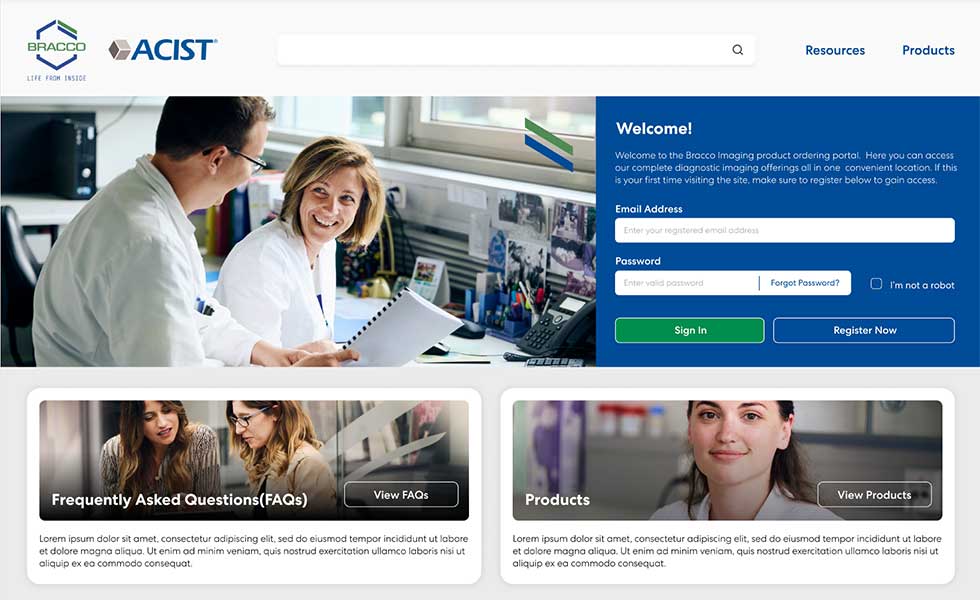
In your work, you must use a large number of different software. How did you learn all that software? Did you go to some courses, study online, did someone help you or did you master everything yourself?
Except for:
- CorelDraw: 1-month course; my 1st employer-sponsored me to learn this software for implementation in footwear design.
- 2D Animation: 2-week course in 2D Animation; I did to brush up my animation skills.
- UI/UX Design: Online 2-week UI/UX design course; I did it to complete a formality asked by a previous client as a criterion, though I had been in UI/UX design for quite some time.
All other skills, tools, software, and platforms were self-learned.
However, having said ‘self-learned’, it doesn’t mean that I did not seek support in my learning through other means. The experience gained while working on live projects certainly added a lot of expertise and value to my skills.
For example, a few years ago, while working on an interactive PowerPoint deck, I felt that using a few animated characters to narrate the context would bring life to the entire presentation. This was another motivation for me to learn 2D animation, and then keep practicing and improving on it, which is still helping me in bringing a lot of value to my clients and myself.
I must admit that though different software and tools may have different functionalities, and may look difficult to learn, the fundamentals remain the same, which makes diversifying your software knowledge possible and less challenging. For example, CorelDraw and Adobe Illustrator have different tools and functionalities, but they still carry great similarities in the way they are implemented. Other platforms follow similar principles.
In order to keep myself updated with the latest software, tools, and technologies, I keep checking various design influencers, literature available on the web, online workshops, design case studies, etc. to learn and upscale myself. YouTube is a super resource for anybody like me who wants to learn different tools and platforms at a negligible cost.
In your career, have you always been a freelancer, or have you ever worked for a company?
Yes, I have worked in full-time employment with a few leading companies from the year 2009 to 2017 in different design and creative roles. Being a freelancer has never been a plan though becoming a successful freelancer was always my dream.
Immediately after graduating from FDDI in 2009, I joined Lee Cooper UK in their India-based footwear R&D center (in a full-time capacity). I did my internship there being a student, where I was offered a job to join the company and lead their R&D initiatives after my graduation, which I humbly accepted. I worked there until 2013 before I had some health issues and took up some freelance work to sustain my income and survive.
After that, I joined a few more companies full-time. One of them was Droom, which was an online eCommerce platform for selling and buying used automobiles. That was a drastic transition for me, moving from a hardcore fashion, footwear & accessories industry to a 100% tech-based e-commerce venture in a project management role. Things were challenging for me for some initial months when I had to design their algorithms and contribute (not as a designer, but on an analytic level) to their UX design efforts.
I would say that working with Droom in 2017 was my first interaction with UI/UX, which I wanted to leverage and exploit. However, my past (and vast) experience in the footwear industry was a challenge to earn a more pivotal role in UI/UX design as I was considered a fresher in this highly tech-driven industry. This again added to my frustration, followed by the bad health of my father, I left this job to support my family because I had to travel almost 120 km every day from my house to the office, which wasn’t going well. I left Droom at the end of 2017 and desperately started looking for a new full-time job.
But fate had something else stored for me. Despite having an impressive professional background and accomplishments, I could not secure a satisfactory paying job and support my family. I gave several interviews with no results.
That was high time for me to choose a different path that pays me (career growth was not a priority for me at that time as I was struggling to even secure a fixed monthly income to support my family).
That’s when I started connecting with my past bosses and other valued networks, which actually worked. I got a freelance opportunity with Aakash and Co, Delhi that provided me with a fixed monthly income. Though it was quite less, I shall always be grateful to them for their support in my challenging times.
The next collaboration in this direction has been with WorxWide UK (formerly BidsAndBeyond), and on. I am still collaborating with newer, long term clients and expanding my business.
That was the start of my ever-growing ‘proud full-time freelance’ career. I am grateful to God that I could not get a full-time job at that time because now I have a handsome income, luxury, and reputation, have been able to build assets, my own office, and have a large base of global valued clients which I might have never gotten in a full-time job.
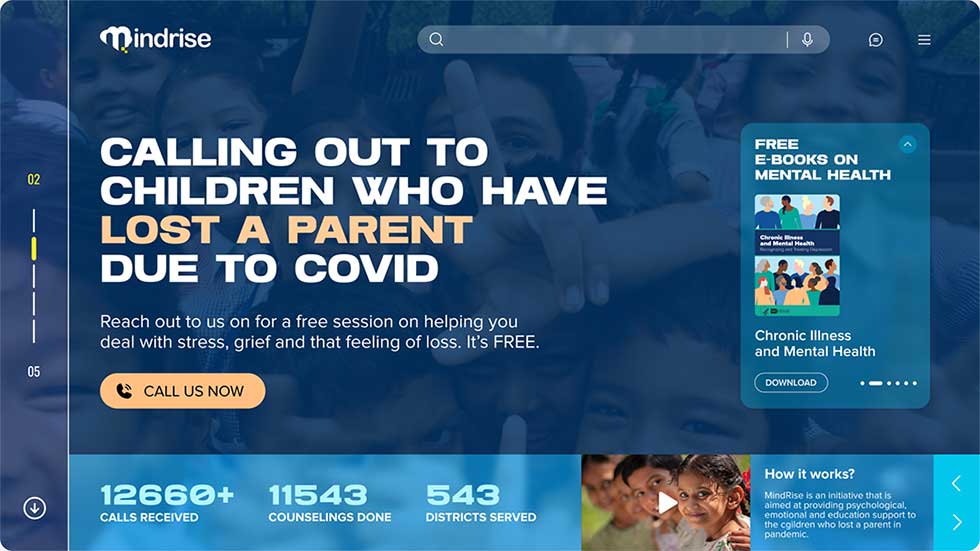
What are the main differences between working in a company and working as a freelancer?
There are many differences, including the pros and cons of both working as a creative designer in full-time employment VS freelance mode.
However, I strongly feel that hiring talented freelancers is being preferred over full-time resources, and this trend will continue to grow. As companies navigate through economic uncertainties and strive to stay competitive, they often opt to hire freelancers instead of maintaining full-time employees. This shift allows them to tap into a vast pool of talented designers and creators without the long-term commitment and expenses associated with hiring permanent staff. From my perspective as a freelance designer, this trend has presented a tremendous opportunity to successfully run my own brand.
Many full-time employees think that freelancing is a ‘Be Your Own Boss’ concept. This is a misconception. Everyone has a boss, and that’s a reality. Freelancing is certainly a job, just like being in a business too is a job. Likewise, many freelancers think full-time employment as fully secure, comfortable, and full of perks, which is again not true. Full-time employment comes with a lot of conditions, challenges, and most importantly, the dependence on a single source of income., which makes it a risky and volatile choice in today’s scenario of cost-cutting and lay-offs.
However, freelancing is definitely a gateway to entrepreneurship and business ownership with minimum resources, infrastructure and much lesser costs. There are freelancers who are more successful, self-reliant and earn similar and sometimes better than many established startup founders. Being a freelancer, you are a company, a business, a brand, a team in yourself, which is so empowering and satisfying.
There are some pointwise differences that I want people to understand and clear doubts if any:
- Stability and Security: Full-time employment typically offers more stability and security with a regular paycheck, benefits, and potential career growth within the company. Freelancers have more flexibility but may experience income fluctuations and need to manage their own financial security, but this may vary depending upon the project and client you’re engaged with.
- Work Schedule and Flexibility: Full-time employees generally have a set schedule and work regular hours. Freelancers have more flexibility to choose their working hours and can adapt their schedules to fit their lifestyles and personal preferences. But this can be otherwise as well. I usually work for 13-14 hours every day, and some days even more, and I hardly get any week off or free time. But I enjoy keeping myself busy with creative stuff.
- Variety of Projects: Freelancers often have the opportunity to work on a wider variety of projects and clients, spanning different industries and design verticals. That’s the reason I work with diversified projects across different industries on a regular basis. Full-time employment may offer more specialization within a specific company or industry.
- Client Relationships: Freelancers build direct relationships with clients, collaborating closely on projects and managing client expectations themselves. In full-time employment, client interactions may be mediated through account managers or project managers, reducing direct client involvement for designers.
- Creative Control: Freelancers have more autonomy and control over their creative decisions. They can shape their own design process, choose the projects they want to work on, and have more influence over the final design outcomes. But again, this is conditional, as many clients expect their in-house design process and existing methodologies across their projects and want the same to be practiced by their service providers. In full-time employment, creative decisions may be influenced by the company’s brand guidelines, management, or team collaboration.
- Benefits and Resources: Full-time employees often receive benefits such as health insurance, retirement plans, paid time off, and access to company resources, software, and equipment. Freelancers need to manage their own benefits and invest in their own resources and tools. But there are many clients who offer some full-time perks even to freelancers based on tenure and contracts.
- Networking and Professional Development: Full-time employment can provide opportunities for networking within the company and access to professional development programs or mentorship. Freelancers need to actively seek networking opportunities, and industry events, and invest in their own professional development. Yet, networking and professional development is somewhat the same and vital across both formats.
- Administrative Tasks: Freelancers are responsible for managing their own business operations, including invoicing, contracts, taxes, and marketing. Also, legal, taxations, and other compliances are there to be taken care of solely by freelancers. Full-time employees have administrative support within the company, allowing them to focus primarily on design work, without much external effort.
- Creative Freedom and Experimentation: Freelancers often have more freedom to explore experimental or unconventional design approaches since they are not bound by company policies or guidelines. Again, this comes with conditions and may depend on case to case OR client-to-client basis. Full-time employment may involve more adherence to established brand guidelines and design standards.
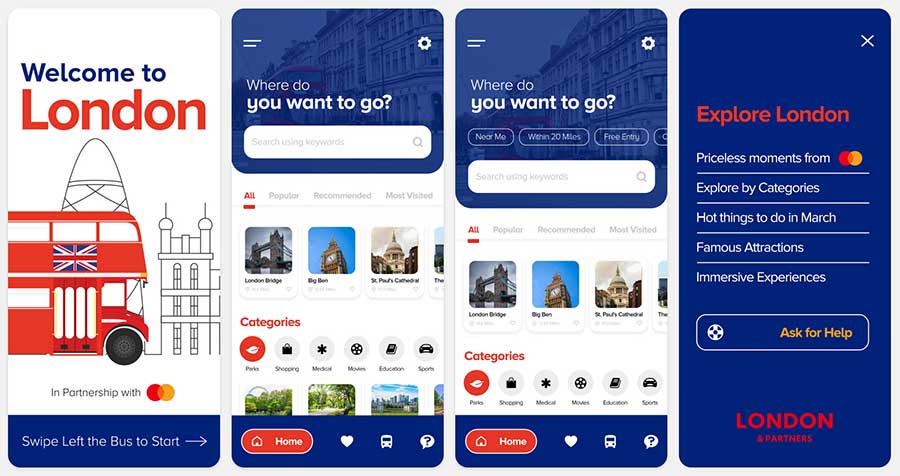
As a freelancer, what is the most demanding thing for you – coming up with an idea, working with people, regular communication, work organization, administration, or something else?
I think the client (or organization with whom I am collaborating), their intent, and scope of work is very much important.
- Client/Organization: Understanding the ideology, history, mission, vision, and credentials of the client or organization is crucial in determining the potential for long-term success in a collaboration. This knowledge not only motivates freelancers or hired resources but also allows them to anticipate opportunities for consistent growth and upskilling within the partnership.
- Intent: While it may sound self-centered or harsh, it is essential to address the issue of clients, even those considered “good,” potentially attempting to exploit freelancers by engaging in practices such as payment evasion, contract misuse, or blocking payments. Therefore, it is crucial for freelancers to ensure that they receive fair compensation for the services they are delivering.
- Scope of work: While financial aspects are important in any project or collaboration, the nature and scope of the work hold equal significance. Personally, I find immense satisfaction in working on challenging and unique projects that provide opportunities for personal and professional growth. It is also essential to ensure that my skills align with the scope of work to meet and exceed the expectations placed on me by clients who have entrusted me with their projects.
I have been fortunate that each collaboration and assignment I have undertaken has been distinct in terms of project expectations, work nature, collaborators, stakeholders, and more. The diversity in these experiences has not only been refreshing but has also consistently provided a supportive environment for me to thrive.
What do you consider the best part of the freelance lifestyle?
One of the most appealing aspects of freelancing is the flexibility it provides. As an experienced freelance designer, I have the ability to mutually discuss and settle when and where I work. I can set my own schedule (up to an extent), which can help better work-life balance and the freedom to pursue personal interests or take breaks when needed, though I hardly have any. For quite some time now, I have been super busy with multiple parallel engagements.
With over 5 years of freelance experience, I have been fortunate to build a diverse portfolio and a network of clients. This opens up opportunities to work on a wide range of projects across different industries and design verticals. The variety keeps my work fresh and engaging, preventing monotony and allowing for continuous learning and growth. I also have the advantage of refining and improving my creative skills and developing my own design style. I have a large amount of freedom to take creative control over projects and make decisions that align with my vision and expertise, which is not so common in full-time employment. This level of autonomy is incredibly fulfilling and satisfying.
Freelancing allows me to build direct relationships with my clients. I have the opportunity to work closely with them, understand their goals and preferences, and provide personalized design solutions. This direct interaction often leads to a deeper understanding of client needs, better collaboration, and a more rewarding creative process. I usually choose to work on long-term projects with a threshold ticket size, ensuring I get compensated well.
Freelancing helps me foster an entrepreneurial mindset. As a freelance designer, I have the opportunity to run my own business, build my personal brand, manage client relationships, set up commercials, make strategic decisions about my career, and more. This level of independence is very empowering and satisfying, as I have full control over my professional trajectory and the ability to shape my own success.
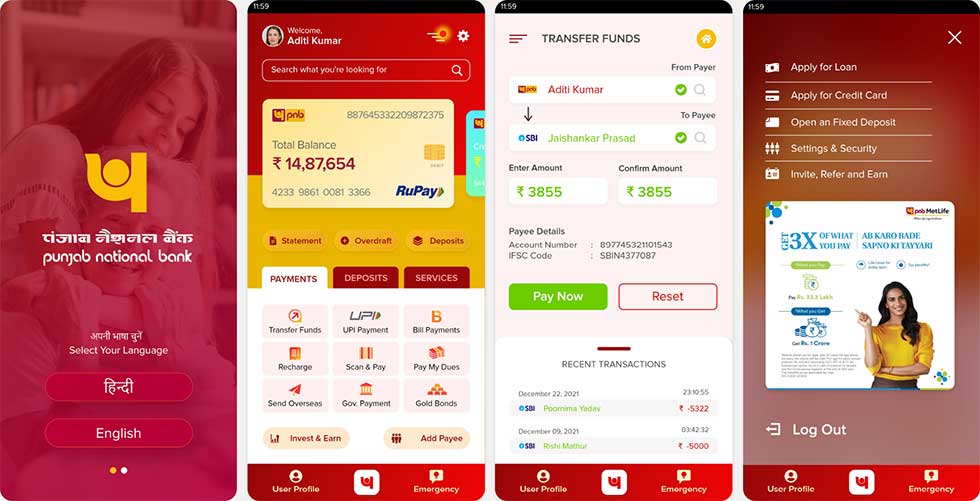
And what is the downside of freelancing?
Being into freelancing, I have seen fluctuations in income as a regular phenomenon. Ups and downs can be serious and drastic. Some months may be financially rewarding, while others may be slower. It can be challenging to predict and manage cash flow effectively, especially when starting out or during periods of economic instability. But with regular upskilling, diversifying skills & portfolio, and investing time and efforts in this career, I have managed to maintain lesser fluctuations than other professionals in respective design domains.
You’re responsible for finding and securing clients. This requires ongoing marketing efforts, networking, and building a strong online presence. Finding new clients can be time-consuming and may involve dealing with rejection or competition. So, having a thick skin does help.
Coming on to administration and compliance, I have to handle various tasks such as invoicing, timesheet maintenance, contract negotiation, project management, accounting, taxation, etc. These activities can take time away from actual design work and require organizational skills and attention to detail.
Often, as a freelancer, I work alone as a one-man army. This, in my initial phase, led me to feelings of isolation. Without a team environment, collaboration and brainstorming may be limited, potentially impacting creative ideation and growth. But now I am familiar with such a situation and feel quite comfortable to continue performing.
While versatility is a benefit, it can also be a challenge. As a freelancer, I always have to continually learn and adapt to different design verticals, tools, practices, expertise, and technologies. Keeping up with industry trends and continuously expanding your skill set can be demanding and extremely important to continue being successful. It also helps deliver above expectations to the existing customers and expand the portfolio of new potential customers with better business returns.
Unlike full-time employment, I generally do not expect to receive benefits such as health insurance, retirement plans, paid time off, or paid sick leave. However, I make sure to invest in my own health insurance, retirement savings, and more to buy my peace of mind which helps me in better productivity with backup and safety in place.
How important is constant learning of new skills and improvement for designers and freelancers?
Constant learning of new skills and improvement is of paramount importance for designers and freelancers, and this holds true for my experiences as a freelance creative designer with over 12 years of expertise. Throughout my career, I have witnessed the significant impact that continuous learning has on professional growth, marketability, and client satisfaction.
As a freelance designer, I’ve encountered diverse projects across various industries and design verticals. Each new project brings unique challenges and requirements, demanding a versatile skill set and a willingness to adapt. By actively engaging in continuous learning, I have expanded my knowledge base and acquired new skills that allow me to tackle a wider range of projects. Whether it’s mastering new design software, exploring emerging design trends, researching, or understanding evolving user behaviors, staying updated is vital to remaining relevant in the fast-paced design industry.
With evolving technology and market dynamics come evolved challenges. AI versus designers is one of such aspects we see today on a regular basis, leading to layoffs, budget cuts, and more. In such an ever-evolving design landscape, constant learning enables me to deliver innovative, effective more than expected design solutions, and stay relevant. By staying curious and open-minded, I have embraced new techniques and approaches that enhance my creative process and improve the outcomes of my work. It’s not been an easy practice, but with time and patience, you get to master it. Through experimenting with different design methodologies, researching industry best practices, and attending relevant workshops and conferences, I have been able to push boundaries and provide cutting-edge designs that meet and exceed client expectations.
Furthermore, continuous learning has helped me develop a strong personal brand and reputation as a freelance designer. By demonstrating a commitment to professional development, I have gained the trust of clients who value my up-to-date knowledge and expertise. This has resulted in repeat business, positive referrals, and an expanding network of contacts within the industry. Clients appreciate designers who invest in their craft and are capable of delivering modern and effective design solutions.
Beyond technical skills, continuous learning has fostered my personal and professional growth throughout my freelance career. It has nurtured my passion for design, fueled my creativity, and inspired me to explore new avenues of expression. By actively seeking out learning opportunities, I have cultivated a mindset of curiosity, adaptability, and resilience that has been invaluable in overcoming design challenges and embracing new design directions.
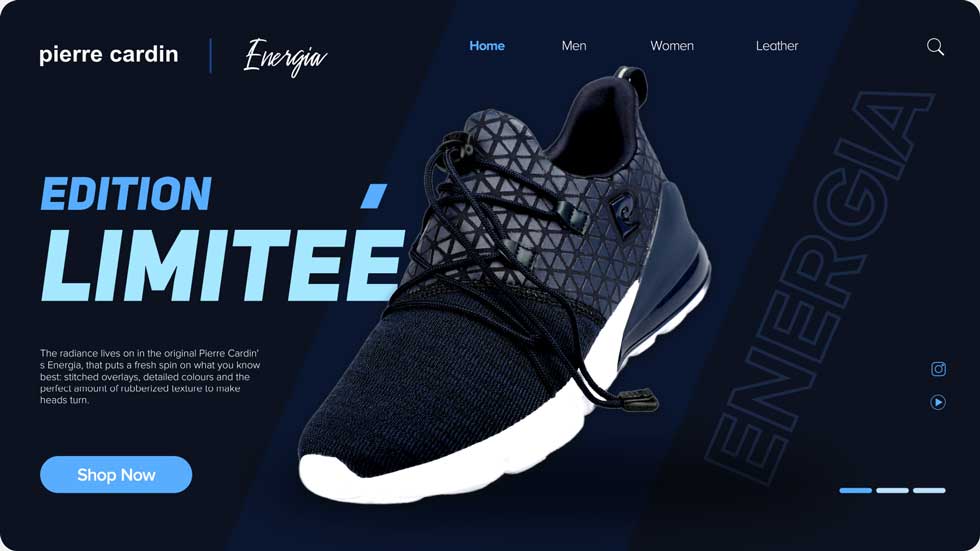
What requires more learning, new design techniques, or new freelance skills?
In my opinion and professional observation over the years, learning both design techniques and new freelance skills is highly important for every aspiring freelancer. And not just freelancers, even full-time employed resources too should invest time and efforts to continue learning as the market dynamics are highly volatile given the situation of frequent layoffs, job crisis, rise of AI, and more.
Moreover, recent unfortunate events in financial and start-up sectors, such as the collapse of big US banks have created waves of uncertain employment, which made it imperative for every designer to continue maintaining their pipeline of new opportunities.
However, the amount of learning required for new design techniques versus new freelance skills can vary depending on individual circumstances and career goals. Generally, designers typically invest more time and effort in learning new design techniques compared to acquiring useful and contemporary freelance skills. It’s like putting more effort into learning to drive a new car rather than practicing it on different roads and traffic conditions.
Design is a creative field that constantly evolves with emerging trends, technologies, and user expectations. As a designer, staying current and mastering new design techniques is essential to deliver innovative and impactful solutions. Design techniques encompass a wide range of skills, such as typography, composition, colour theory, user experience (UX) design, and interaction design. Advancements in software, tools, and design methodologies further contribute to the need for continuous learning in this aspect.
On the other hand, acquiring new freelance skills often involves developing a broader set of entrepreneurial and business-related skills beyond the regular design practice itself. These skills may include marketing, client management, negotiation, project management, budgeting, compliance, legal, and time management. While these skills are important for freelancers to succeed, they are generally less demanding in terms of continuous learning compared to the rapidly evolving nature of design techniques.
You are also a mentor at DesignLab, a US-based design education center. How did that collaboration come about?
My parents, particularly my mother who was a teacher, has always inspired me to seek involvement in the education industry. I desired to share my expertise in a subject I excel at. As a step in that direction, I had the opportunity to deliver guest lectures in several institutes in Noida a few years ago. Although these opportunities were informal and arranged through connections, they ignited a passion within me to pursue teaching. I decided to actively search for teaching opportunities specifically in the field of design.
In 2022, I was fortunate to be offered a position as a Mentor at DesignLab, a prestigious design education center based in the United States. The process involved applying for the position, participating in multiple interviews, having my portfolio reviewed by their selection panel, and more.
I am honored to have established a formal association with DesignLab, where I currently teach students who aspire to become designers or are already working professionals. The majority of my students come from the United States, Canada, Europe, and other Western countries. My teaching focuses on various aspects of design, including UX Design, Visual Design, Career Guidance, and practical design practices. The goal is to assist students in transitioning into the design field and enhancing their career prospects by providing them with valuable insights and knowledge. With my extensive experience in diverse creative fields and design domains, joining DesignLab has allowed me to fulfill my dream of becoming a teacher and aiding aspiring designers in shaping their careers.
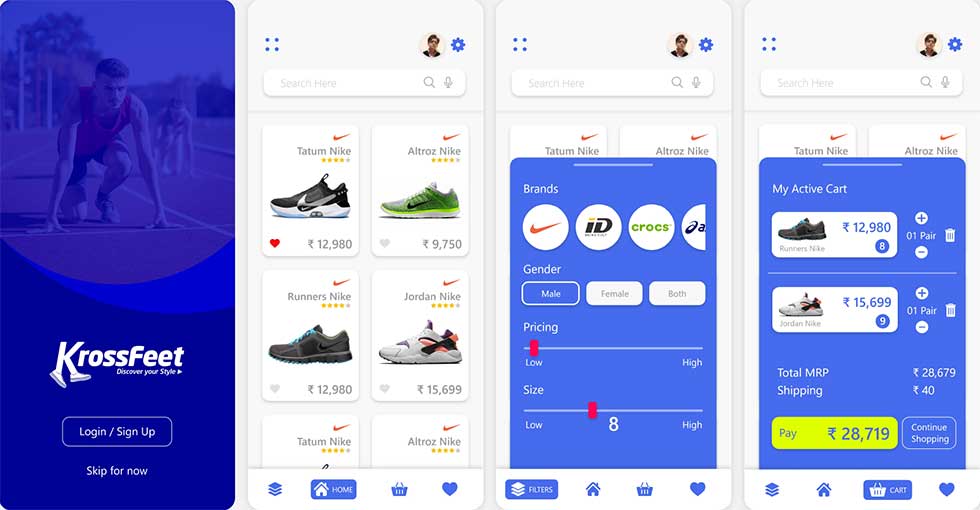
How important is it to help others, as a mentor, with advice or in any way?
Helping others as a design mentor or in any way is of great importance. Throughout my career as a designer, I have come to realize that sharing knowledge, insights, and advice not only benefits others but also contributes to personal and professional growth.
As a design mentor, I have had the privilege of guiding and supporting aspiring designers, junior professionals, or even colleagues in their creative journeys. By offering advice and sharing my experiences, I have been able to provide valuable guidance that helps them navigate challenges, overcome obstacles, and accelerate their learning curve. Mentoring allows me to give back to the design community and contribute to its overall growth and development.
When I assist others, it creates a positive ripple effect. By sharing knowledge, I promote a culture of collaboration and continuous learning among my clients’ stakeholders and collaborators. As designers support and uplift each other, we collectively elevate the quality of design work and contribute to the advancement of the profession as a whole.
Moreover, helping others is a mutually beneficial experience. When I engage in mentorship or provide guidance, I gain a fresh perspective on my own work. By articulating my thoughts and explaining design concepts to others, I deepen my own understanding and refine my skills. It challenges me to reflect on my design process, consider alternative approaches, and stay up-to-date with industry trends and best practices.
Additionally, being a design mentor allows me to build meaningful relationships within the design community. By nurturing connections with mentees, peers, and fellow designers, I expand my professional network. These connections often lead to collaboration opportunities, knowledge exchange, and even personal growth through the insights and experiences shared by others.
You were nominated and invited to the World Incubation Summit (2017) at Toronto (Canada). Tell us a little more about it.
In 2018, I embarked on my full-time freelance journey after previously initiating a solar energy start-up called Soletrix. While I was working at Droom, I dedicated my spare time to develop and launch the start-up, which surprisingly gained momentum even without significant promotion or effort. During this period, the organizers of the World Incubation Summit recognized the potential of my start-up and extended an invitation for me to participate in the event in 2017.
Unfortunately, due to my father’s declining health and my own financial struggles, I had to abandon the plan of traveling to Toronto and attending the event. Additionally, these challenges resulted in the eventual closure of Soletrix, dealing a significant blow to my entrepreneurial aspirations. Nonetheless, being nominated and invited to the World Incubation Summit remains a noteworthy accomplishment for me.
However, it wasn’t too late for me to embark on a new entrepreneurial path. In 2018, I embraced freelancing and ventured into building my own empire. Today, I am proud to say that I have achieved considerable success, satisfaction, and take pride in the accomplishments I have attained over the years.

Artificial intelligence is increasingly present in online business. Have you started using some AI apps in design or in freelancing?
Though I am an old-school, who loves to create content from scratch, backed by my research, inspirations, and testing, there are a few AI-based tools that I use often.
- Canva: This is a popular graphic design and interactive media creation platform that offers a range of AI-powered features. I don’t use it much, as I like creating content from scratch with fresh ideas. However, it provides access to a vast library of templates, images, and design elements, incorporates AI assistance to suggest design improvements, offers color palettes, and more that help me with a variety of ideas and inspirations.
- Remove.bg: Remove.bg is an AI-powered tool that automatically removes the background from images. It saves a lot of my time and effort by swiftly extracting subjects from photos, allowing for easy integration into different design compositions or presentations.
- ColorSpace: I’ve recently started using it. ColorSpace is an AI-driven color palette generator that assists designers in creating harmonious color schemes.
- Lunacy: This is an underrated design tool, which is very powerful and feature loaded. This is a Sketch alternative for Windows and helps to create cutting-edge visual designs, graphics, UI/UX designs, and more very easily. And it’s Free to use!
- Midjourney: This is an AI-based visual and graphic generation platform. I use it to create caricatures and illustrations for various purposes, such as converting them into animated live characters, and more. It also helps me in my research of design trends, and inspirations, and generates high-end quality visuals for mock-ups.
Do you think that AI could one day threaten the work of designers, or do you see it more as a new tool?
I don’t think this AI should be observed as a threat to designers. Instead of viewing AI as a threat, designers can use it as a new assistive tool to enhance their work and improve efficiency. AI can assist designers in areas such as generating design variations, optimizing workflows, or providing data-driven insights that inform decision-making.
To stay relevant and grow in the era of AI, designers can focus on developing skills that complement AI technologies rather than competing against them. Here are some strategies:
- Build a deep understanding of human-centric design: AI may be able to assist to analyze data and patterns, but understanding human needs, emotions, and behaviors is an area where designers can excel.
- Improve on creativity and innovation: Designers can foster their creativity, embrace experimentation, and think outside the box to develop unique and imaginative solutions that AI cannot replicate. By being open to learning and adapting, designers can integrate AI into their workflows and leverage it as a complementary tool.
- Develop complementary skills: Designers can focus on cultivating skills that work in tandem with AI technologies. This includes mastering data analysis and visualization, understanding AI algorithms, the ability to create to-the-point and accurate AI prompts and tweak them, and their implications for design, and staying informed about the ethical considerations surrounding AI use in design.
You have worked for many famous brands. How did you make those contacts and manage to get such jobs?
During my initial phase, around the year 2018, I depended on senior executives from my past employers to get me the first break in freelancing, which actually worked. However, soon I realized this ‘only’ collaboration won’t help me much financially.
I soon started looking for new parallel engagements and opportunities both through referral and organic ways. Referrals (primarily introductions; there is nothing new with this and most of us already know how it works) help a lot to get genuine introductions with fair intent. However, with referrals, you may have to compromise your freedom to negotiate on commercials and other terms as keeping your referrer obliged too is important.
So, it is important to keep your proposal flowing and reach out to new clients and companies even outside your network.
Yes, that’s true, while many of my fellow freelancers and peers struggle to get breakthroughs or acquire a basic term contract, I am privileged to have some of the largest companies and institutions as my regular clients. Here are a few ways that I use to acquire genuine and high-paying customers:
- Well-updated resume: Yes, you read it right. Many freelancers think that a beautifully crafted design portfolio is the only thing they need. However, a well-crafted resume with an updated resume with the most relevant information is equally necessary. My resume has really helped me a lot to get selected from a crowd of other profiles. Remember, there are many companies that still use resumes to filter freelancer profiles and proposals to the next stage of portfolio review. So if your resume is not compliant with industry standards and best practices, the chances of your portfolio review are lesser.
- Attend industry events (physical/ virtual): Many industry events have shifted to virtual platforms, providing opportunities to connect with potential clients and industry professionals from around the world. I participate in webinars, virtual conferences, and industry networking events (both on-site and virtual) to expand my network and increase my chances of finding long-term freelance clients.
Also, visiting physical (on-site) trade and industry events and expos helps to identify serious and genuine clients who have a budget to pay for my services, while getting a glimpse of their business reputation and scale.
- Industry-specific websites and directories: I keep exploring websites and directories that cater specifically to my niche or industry. These platforms include job boards, project listings, and directories where clients actively seek freelance professionals.
- Professional networking platforms: I extensively utilize platforms like LinkedIn to connect with professionals in my target organizations. I connect with organizations’ leadership teams, project managers, hiring teams, etc., and join relevant groups to increase my outreach efforts. Engaging with potential clients and establishing connections that may lead to long-term freelance opportunities.
Keep updating your LinkedIn profile (and other social media profiles, if any) regularly. Search for relevant opportunities and respond to them in a very professional manner. Avoid blunders like commenting ‘I am interested’ under an opportunity post.
Remember that finding long-term freelance clients requires patience, persistence, and consistent effort. Actively promote your services, build relationships, and provide exceptional work to establish a reputation that attracts clients who are looking for ongoing collaborations. I never compromise on the quality of my services and deliverables even if I have to walk the extra mile. This is not easy to practice and adopt, but slowly and gradually you’ll get into a no-compromise attitude, which certainly pays back.
Also, don’t limit your hunt to your demography. I always keep my eyes open to international opportunities which has always helped me get clients with great projects and compensation.

What is your advice for freelancers, how to find more work and better jobs?
In my experience as a freelance designer, finding genuine and long-term customers is certainly challenging, and requires a proactive and strategic approach. Here are some insights and strategies I have discovered:
- Build a strong online presence: Invest time in creating a professional website or portfolio that showcases your work, expertise, and client testimonials. I use Linktree to consolidate all my active portfolios and important links for my clients to check them under one roof. Ensure your online presence reflects your unique style, skills, and the value you can bring to potential clients.
- Clearly define your target audience: Identify the specific industries, businesses, or individuals you want to work with. Understand their needs, challenges, and preferences. By narrowing down your focus, you can tailor your marketing efforts and communication to attract the right kind of clients who are more likely to form long-term partnerships.
In my case, my preference has always been institutional clients with mid-to-large ticket size, and who are open for an hourly bracket based engagement. When my clients value my parameters, it becomes my duty to fulfill their needs and expectations even if I was to walk an extra mile.
- Utilize social media effectively: Leverage social media platforms that align with your target audience and industry. Create engaging and relevant content (if you can) that showcases your expertise and highlights your portfolio. Engage with your audience by responding to comments, participating in discussions, and networking with potential clients. Consistency and authenticity are key to building trust and attracting long-term customers.
- Leverage professional networks: Tap into your professional networks, both online and offline. Connect with colleagues, friends, and past clients who can refer you to potential customers. It has really been proven in my case. Attend industry events and trade shows, conferences, and meetups where you can network and establish connections. Word-of-mouth recommendations from trusted sources can often lead to long-term client relationships.
- Be proactive in seeking opportunities: Don’t wait for clients to come to you. Actively search for job boards, freelance marketplaces, and industry-specific websites where businesses post freelance opportunities.
- Deliver exceptional work and customer service: When you land a freelance project, go above and beyond to deliver outstanding results. Meet deadlines, communicate effectively, and be responsive to client feedback. By providing exceptional work and building strong relationships, you increase the likelihood of repeat business and referrals.
- Cultivate trust and maintain relationships: Long-term clients value trust and reliability. Nurture your relationships by staying in touch with past clients, sending updates on your latest work, and offering assistance or insights when needed. Building a strong rapport with your clients can lead to ongoing collaborations and referrals to other potential customers.
Finding genuine and long-term customers online takes time and perseverance. It requires a combination of building a solid online presence, leveraging networks, proactive outreach, and consistently delivering exceptional work. By focusing on building relationships and providing value, you can attract clients who appreciate your skills and are willing to establish long-term partnerships.
SolidGigs, DesignCrowd, LinkedIn, Toptal, PeoplePerHour, Fiverr, Authentic Jobs, etc. are some of the famous and trusted platforms to get organic freelance engagements. However, don’t limit yourself to these and explore all direct and indirect ways to get potential introductions. Remember, all these marketplaces are usually crowded with your competitors. So the more you invest time exploring ways to reach your target customer, the better chances you have to win a potential project.
Furthermore, I’ve noticed a common mistake made by both new and established freelancers. They tend to overlook the necessity and significance of having a relevant and up-to-date resume in addition to their portfolio.
Many companies utilize an Applicant Tracking System (ATS) to streamline the process of reviewing profiles and resumes, enabling them to filter out the best-suited freelancer profiles for their specific requirements. However, a poorly constructed resume will always serve as a hindrance to receiving calls from potential employers and clients.
It is crucial to remember that when you engage in the organic pursuit of freelancer projects, you are competing with thousands of other applicants. If your profile or resume is rejected at the initial stage, your prospects may not even have the opportunity to review your portfolio. Hence, your resume holds the same level of importance as your design portfolio in terms of showcasing your work samples.

And what do you advise, how to keep clients and turn them into regular clients?
From my perspective as a freelance designer, satisfying clients and building long-term relationships involve several key elements. Satisfying clients and building long-term relationships is a combination of excellent design skills, effective communication, proactive problem-solving, and exceptional customer service.
By consistently delivering quality work and demonstrating your commitment to their success, you can establish yourself as a trusted partner and secure long-term collaborations. In simple points, I would advise the following:
- Understand and empathize with your clients. This is the backbone of the human-centered design approach and pays back in the long term.
- Keep communication channels open and transparent.
- Deliver high-quality work and adopt a ‘no-compromise from quality’ attitude.
- Be open to critical feedback and implement revisions.
- Offer proactive solutions, advice, and suggestions with tactical and long-term POV..
- Provide exceptional customer service and be ready to walk the extra mile for customer satisfaction.
- Maintain ongoing relationships.
Have you ever used platforms for freelance work, such as Upwork or Fiverr? What are your experiences with those platforms?
Yes, I used them around the year 2018, and luckily, I got initial success as well. However, over time, these platforms have become overcrowded. Even the recent Covid crisis, waves of global lay-offs, and more have contributed to this crowd of work-seeking professionals seeking their 1st breakthrough in a long time.
Though my freelancer profile might still be active on Upwork or Fiverr, I haven’t got any opportunities from them. Reciprocally, I’ve been fully active on organic methods rather than depending upon these freelance marketplaces.
What qualities must a designer possess to be successful?
For a designer (freelance OR full-time employed) building a successful and well-paid career requires a combination of these qualities, personal branding, marketing strategies, and a commitment to delivering exceptional work.
From my 12+ year design career, I feel that continuously refine your craft, improve your skills, have a solid, versatile, and impressive portfolio, build strong relationships, and leverage your expertise to attract clients who appreciate your skills and are willing to pay a premium for your services.
Let me elaborate on these qualities as follows:
- Exceptional Design Skills: Possessing a strong foundation in design principles, creativity, and technical proficiency is crucial. Stay updated with the latest design trends, software, platforms, technologies, and tools relevant to your field. Continuously improve our skills through practice, experimentation, and learning from others.
Self-initiated learning is pivotal for your success. You’re on your own, and it is imperative to get ahead of others to stay relevant in today’s rapidly evolving technology and market dynamics. Continuous learning helps you stay relevant, offer innovative solutions, and command higher rates.
- Strong Work Ethic: Freelancers must have discipline, self-motivation, and the ability to manage their time effectively. Being reliable, meeting deadlines consistently, and maintaining a professional approach are key factors that contribute to success and help build a solid reputation.
- Effective Communication: Clear and prompt communication is vital to understand client requirements, providing progress updates, and addressing any concerns.
I do actively listen, ask relevant questions, and ensure that myself and my client/prospect are on the same page and there are no misunderstandings or gaps.
- Basic Business and Legal Knowledge: Carefully calculating and proposing fair pricing, negotiating contracts, understanding taxes and legal points, managing finances, and handling client relationships has greatly helped me in my success.
- Adaptability and Versatility: Being open to learning new skills, embracing new technologies, and adapting to different client preferences can broaden your opportunities and increase your value in the market.
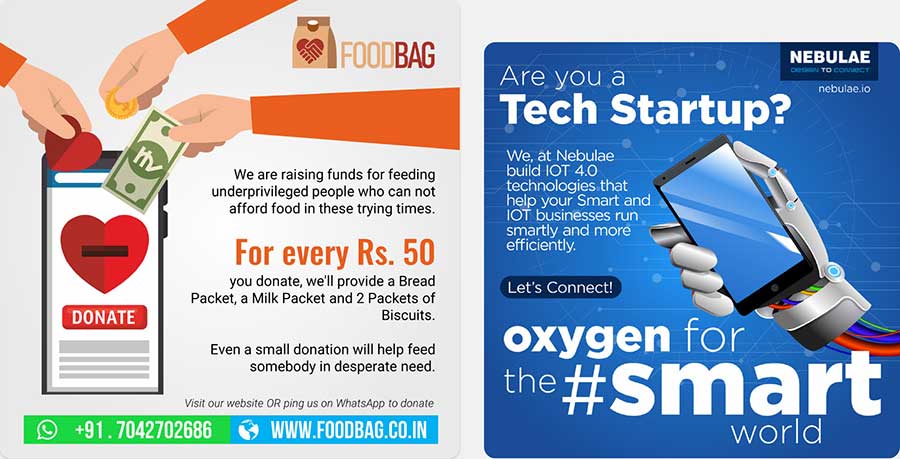
Do you have any habits that you believe help you to be successful?
In my journey as a freelance designer, there are a few habits that have played a vital role in my success. Here are some of the habits that have contributed to my growth:
- Continuous Learning: I have a deep passion for learning and staying up-to-date with the latest design trends, techniques, and software & tools through online courses, tutorials, and industry resources. This habit allows me to offer fresh and innovative design solutions to my clients.
- Effective Time Management: I prioritize and plan my tasks to make the most of my time. By setting realistic deadlines and breaking down projects into manageable chunks, I ensure efficient workflow and timely delivery. This habit helps me maintain a balanced workload and deliver quality work consistently.
- Strong Communication Skills: I understand the importance of clear and effective communication in client relationships. I actively listen to my client’s needs, ask clarifying questions, and provide updates throughout the project. I ensure that both parties are on the same page, which helps build trust and fosters successful collaborations.
- Attention to Detail: I have developed a meticulous approach to my work, paying attention to even the smallest details. This habit ensures the accuracy and precision of my designs, resulting in high-quality deliverables that meet or exceed client expectations.
- Client-Centric and Human-Centric Approach: I prioritize understanding my client’s goals, target audience, and brand identity. By placing their needs at the forefront of my design process, I create tailored solutions that resonate with their vision and empathize with their customers’ needs and situations.
- Professionalism and Reliability: I maintain a professional attitude in all my interactions with clients. I respond promptly to their inquiries, meet deadlines consistently, and follow through on commitments.
What is the best way to organize when working with several companies?
When it comes to managing multiple clients simultaneously as a freelance designer, staying organized is crucial to ensure smooth workflows and timely delivery of projects. Every client wants their submission at the earliest, and it is necessary to value their urgency while keeping another workflow active so that no valued customer feels they are not attended well.
I start by assessing the urgency and importance of each project. I identify deadlines and prioritize tasks accordingly. This helps me allocate my time and resources efficiently, ensuring that I meet client expectations and project milestones.
I maintain a detailed schedule that outlines my daily, weekly, and monthly tasks, as much as possible. By setting specific time blocks for each project, I can focus on one client at a time without compromising on quality. This helps me maintain a structured workflow and prevents overlapping or conflicting deadlines. I depend on Google Sheets, Google Calendar, Jira, and Monday for my project management tasks.
Establishing clear and easy communication channels with each client, and ensuring efficient and effective collaboration has been very helpful to me. I use platforms like Skype, WhatsApp, email, Slack, or dedicated communication tools to share updates, discuss feedback, and address queries uninterruptedly. Many times, the clients have their own nominated channels, like MS Teams, that I use in compliance with their T&Cs. Also, I provide regular progress updates, share work-in-progress drafts, and seek feedback at appropriate stages.
I maintain well-organized digital file systems for each client, both locally and on the cloud. I create separate folders for project assets, reference materials, drafts, and final deliverables. This enables quick and easy access to files, eliminates confusion, and ensures that I can retrieve any necessary information promptly and securely. WeTransfer, PCloud, and Dropbox are few tools that I trust and depend upon.
I allocate additional time for unexpected revisions, unforeseen circumstances, or any urgent client requests. This buffer time helps me accommodate any last-minute changes without jeopardizing other projects’ timelines. It provides a safety net and allows me to handle unforeseen situations smoothly.
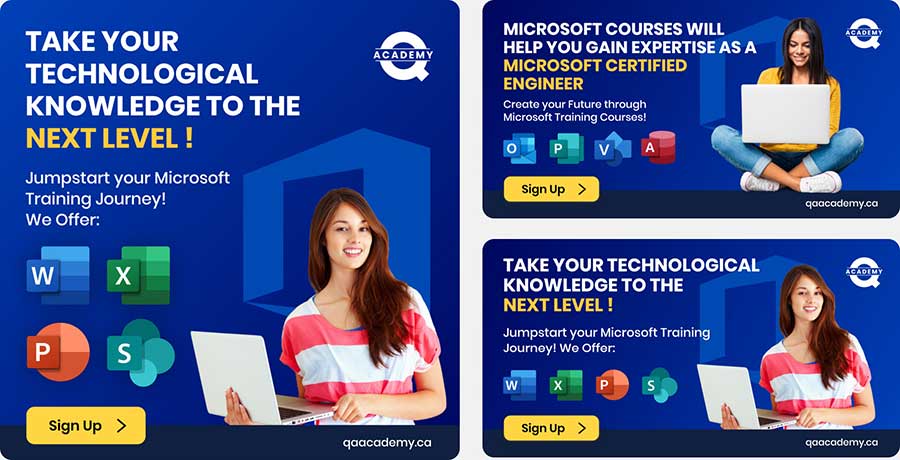
What was the best advice you got at the beginning of your career?
This happened during my early days at my 1st job in 2009. My then boss, Anil Tickoo called up for a distributor-level meeting to review the 1st cut of my design collection. However, the review was not so good which was disappointing to me.
In my disappointment and frustration, Tickoo said to me:
Rishi, do remember that mistakes and setbacks are part of the creative process. Don’t be discouraged by failures or criticism. Instead, learn from them, adapt, and keep pushing forward. It’s necessary for you to embrace resilience and innovation as key traits that will help you overcome obstacles and achieve your goals.
And what’s the worst advice you’ve ever got?
I don’t remember as such 😊
What was the hardest decision you ever had to make as a freelancer?
Sometimes I have to say no to some projects. Having had quite tough and struggling times some years back (before I started full-time freelancing), I know how important every project and opportunity is that comes my way. I understand they can help in contributing to my financial growth.
However, I also need to make sure a new collaboration should not disturb or go against my existing valued clients or engagements, as I have other duties to fulfil as well. And therefore, it is imperative for me to carefully evaluate all pros and cons of a new collaboration or engagement well in advance before starting a relationship with a new client.
So, saying no to a new client or opportunity is the hardest.
If you could start all over again, what would you do differently?
With my practical experience of over 5 years as a full-time freelancer, I feel better prepared and confident than ever before.
If I could start all over again, I would use my experience to carefully evaluate the intent of a client. I have made several mistakes in my career, where one was choosing to work with the wrong client. I was unfortunately cheated and duped. And somewhere my hesitation to say ‘no’ too contributed to that situation.
I made sure not to repeat such situations again in the future and invest time and wisdom to stay away from such problems.
The best advice for those who are considering a freelance career?
In my own experience, freelancing has become the future of work, especially in light of the layoffs and cost-cutting measures implemented by companies worldwide. Traditional employment models have seen significant shifts, with many organizations downsizing their teams or relying more heavily on freelance talent to meet their creative and design needs.
However, freelancing should never be looked upon as a shortcut to success or an easy path to riches. It requires hard work, dedication, and perseverance. If you want to build a successful career as a freelancer, be prepared to hustle and put in the necessary effort. Be prepared for the ups and downs of freelancing. It’s not always smooth sailing. There will be times when clients are rare, projects are challenging, or payments are delayed. Stay resilient, learn from setbacks, and keep pushing forward.
Never stop learning and improving your skills. The design industry is constantly evolving, so stay updated on the latest trends and technologies. Invest in your professional development through online courses, workshops, and self-study, in every possible manner to stay ahead of the competition.
Remember, it is crucial to present your accurate and promising design ideas and solutions to your clients and employers, ones that you genuinely believe are superior to what the client proposes. I have observed numerous freelancers and consultants who, in their eagerness to maintain a good relationship with their clients and please them, often agree to implement ideas and solutions that are imposed upon them, even when they recognize that these ideas will not be effective.
If you persist in this approach, it won’t be long before your client replaces you with a more affordable resource who unquestioningly follows their instructions and completes tasks in less time.
Identifying genuine and non-genuine clients could be difficult for new freelance designers. How can they protect themselves from such unpleasant experiences?
As a freelance designer, it’s crucial for me to be able to tell the difference between genuine and fake clients. This helps me protect myself from those who might try to take advantage of my work without any intention of paying me.
Firstly, I pay close attention to how potential clients approach me. Genuine clients take the time to provide detailed project requirements and ask relevant questions. They show a real interest in my work and demonstrate a level of professionalism. On the other hand, fake clients often send generic messages with vague project descriptions. They may not have a clear understanding of what they want, and their communication might feel impersonal or off.
To further verify the authenticity of a client, I conduct thorough research. I visit their website, check their social media profiles, and search for any online presence they may have. I look for positive reviews or feedback from other freelancers who have worked with them before. If I come across discrepancies, or inconvincible inputs, or notice a lack of information or reviews, it raises a red flag, suggesting that the client might not be genuine.
In order to protect myself, I always insist on using written contracts. These contracts clearly outline the project scope, deliverables, timelines, and payment terms. By having everything in writing, both the client and I have a mutual understanding of what is expected from each other and genuine clients always appreciate the professionalism and transparency that comes with a written contract. Additionally, I always encourage prospects to deduct applicable taxes to be paid to the Government with a certificate/ receipt of such deduction.
To further safeguard me, I consider requesting deposits or milestone payments. This approach ensures that the client is committed to the project and has the financial capability to pay which genuine clients don’t hesitate to consider.
Trusting my instincts is crucial in identifying non-genuine clients. If something doesn’t feel right or seems too good to be true, I listen to my gut feelings and proceed with caution. It’s important to avoid working with clients who raise suspicions or exhibit unprofessional behavior during our initial communication.
